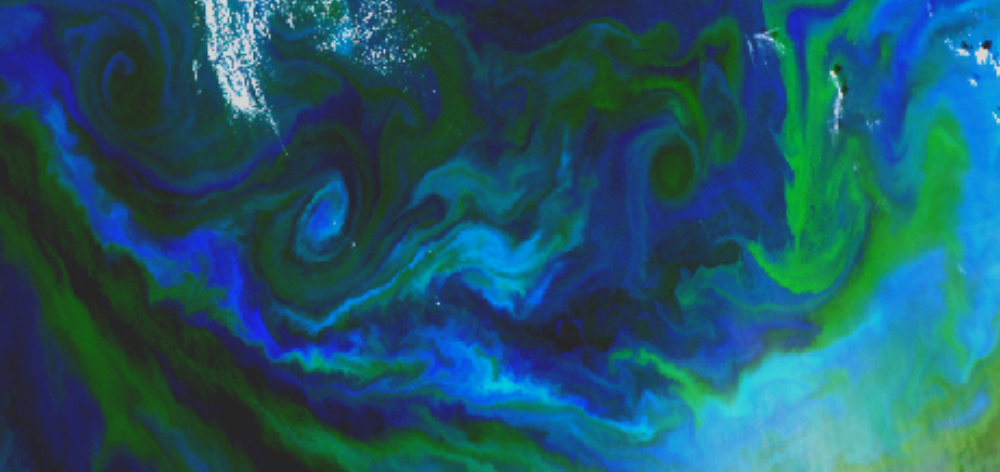One of the projects I have been working on at Bigelow has been the development of a new method, or algorithm, to estimate the amount of particulate inorganic carbon (PIC) in the ocean from satellite observations. PIC is more commonly known as calcium carbonate, or chalk.
So, why do we find chalk in the ocean? Some marine organisms, including particular phytoplankton species, use PIC as a protective outer layer. When there are enough of these phytoplankton in the same place, they turn the water milky blue – a colour change that is so significant we can see it from space. The image at the top of the page shows different phytoplankton species blooming next to each other. The chalk-coated coccolithophores are the bright milky blue strips running down the middle of the image.
Check out this article for more information about this project: Marine Snow and the Sea of Milk
And if you want to read even more about this work, the paper can be found here.
